A BEER CALLED MÜNCH (1904)
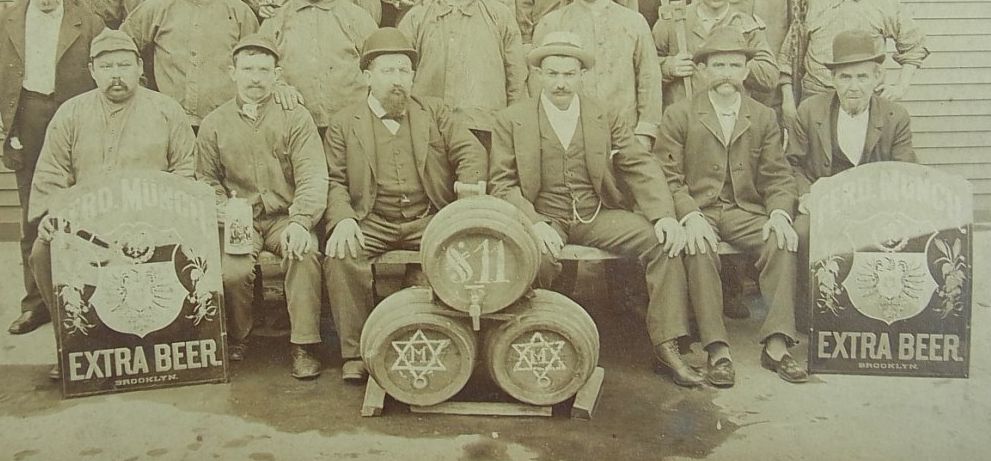
******************************************************************************************************************************** Brownstone Detectives investigates the history of our clients’ homes. The story you are about to read was composed from research conducted in the course of one of those investigations. Do you know the history of YOUR house? ******************************************************************************************************************************** One might wonder if a beer called “Münch” had at one time been on the receiving end of an unfortunate and slightly counter-intuitive moniker. Today, product names are usually selected based upon their abilities to stir some positive emotions – within the minds of the consumers – about their products. “Munch,” though, was not always an informal term describing a way of eating. More than 100 years ago, it was also a German name that was connected in the minds of many Brooklynites with a very satisfying “table beer.” THE MUNCH BREWERY The Ferdinand Münch Brewery, located at 277-299 Vernon Avenue from the late-1870s through to about 1920, when Prohibition spelled its end, satisfied the palates of Brooklyn, as a “family” beer, for more than 40 years. Housed originally within a building of old stone construction, Ferdinand Münch replaced the brewery building with a structure of brownstone and brick shortly after he purchased the property. Münch, though, would pass within the decade and leave his brewery to his sons, one of whom was William Münch. WILLIAM MUNCH AND HIS BROADWAY BUILDING In 1904, Sigmund Eisenbach, of 227 Gates Avenue, built a 4-story office building on the corner of Myrtle and Broadway, selling it to Ferdinand’s eldest son, William Münch, who had […]
The Campfire Girl & The Marxist, Pt. II (1915)
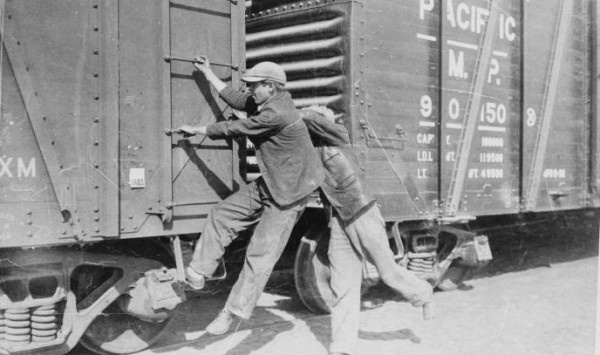
(And now, the thrilling conclusion of – “The Campfire Girl & The Marxist.”) THE ESCAPE PLAN The escape plan seemed so simple in its design that it was later wondered how it ever worked. Although the overall scheme of hopping freight trains headed west was plotted intimately with maps and the help of encyclopedias, the actual disguise plans and methods for eluding authorities was rather, well, sophomoric. But it worked. It seems that Max went down to a store on Fulton street, and there bought for Viola a pair of brown knickerbockers, a Norfolk jacket and a gray cap with a peak on it like a bicycle cap. Viola would look like a boy bicyclist. “He just guessed at the measurements,” said Bostick, adding with a knowing grin, “and I must say Max was a fine guesser.” When Max, Viola, and Andrew arrived at the Kowenhoven station of the Long Island Rail Road – for Andrew was an accomplice in their escape – Max made a suggestion that must have rankled Viola – that, to aid in their escape, she could roll her hair up and hide it under her cap. Viola, however, was having none of that. If she was going to be a boy, she was going to go the distance. She stated firmly that she wanted her curly locks shorn completely. So, there, under the archway of a railroad bridge, Max snipped off six “curls.” He kept three, bound in a handkerchief, and gave three of them […]
The Campfire Girl & The Marxist (1915)
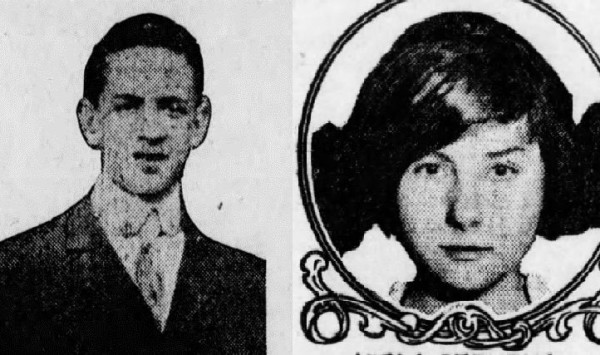
******************************************************************************************************************************** Brownstone Detectives investigates the history of our clients’ homes. The story you are about to read was composed from research conducted in the course of one of those investigations. Do you know the history of YOUR house? ******************************************************************************************************************************** If nature were a fair goddess, she would have made some girls boys and some boys girls. Although most teenagers often go into their young adulthood trying to determine just who they are, some know it instinctively and early on from experiences that leave indelible etchings upon their souls. Viola Stevens was just such a girl. Although she was new to Hancock Street – and a bit serious for her years – she had initially proved herself to be very much like all of the other girls on the block. She loved nature, had boy “friends,” was a Campfire Girl, and had even, after some time, became a Woodcraft Girl. In other words, she spent nearly all of her 15 years doing “girl” things. In 1915, though, all of that changed when she did a very “boy” thing, which terrified her mother and excited the entire borough. She ran away – with a socialist. A MOTHER’S POINT OF VIEW No, of course. The “running away” bit was the actual catastrophe as far as her mother was concerned. The fact that the boy was a socialist simply added some salt to the wound. Any mother would tell you that her daughter is her world and that she is pure as the driven […]
RUTHLESS RHYMES FOR MARTIAL MILITANTS (1914)
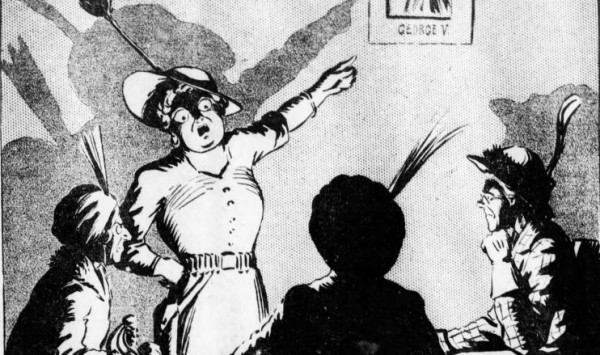
******************************************************************************************************************************** Brownstone Detectives investigates the history of our clients’ homes. The story you are about to read was composed from research conducted in the course of one of those investigations. ******************************************************************************************************************************** To celebrate Women’s Suffrage, we harken back to a day when women suffragettes were pilloried in Brooklyn – publicly – and could not even vote! RUTH-LESS Nothing is easy in life. Women have had it extra hard. Some would argue that it is worse now than it was even back before women had “rights.” But what was it like back then? How high was that glass ceiling? How did Brooklyn treat its women suffering for their rights and the rights of other women? It is not likely that there was much difference between Manhattan and Brooklyn – or Brooklyn and Cleveland, for that matter. It was merely the details that were different – the players, the events, the locations. Brooklyn, though, seemed to have started its anti-suffragette campaign in earnest by having a lark of it in 1914, joking about the movement while sticking the knife in, so to speak, and twisting it with a sort of sinister glee. RHYMES The Brooklyn Daily Eagle, that year, published a series of cartoons by one of its more able cartoonists, Nelson Harding, called “Ruthless Rhymes for Martial Militants.” The cartoons not only showed women in a demeaning light, but they poked fun about their fight for their rights – as well as their chances for success. The cartoons, though clever, were […]
POLICE COMMISH LIKES THE LADIES (1915)
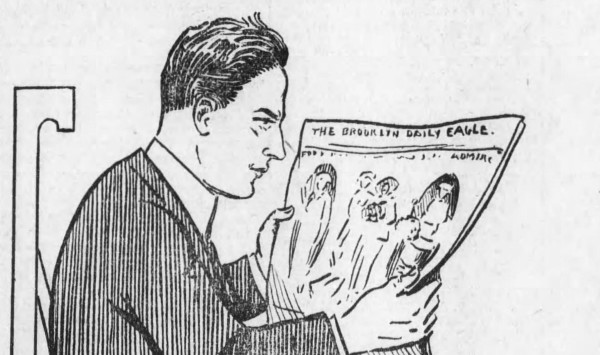
When Brooklyn’s Deputy Police Commissioner Godley laid eyes on the beauties in the newspaper spread, he couldn’t contain himself. He wrote to the Brooklyn Daily Eagle to offer them police protection. “It is unusual for us to offer police assistance, since we ordinarily have enough work to do for all of the policemen we have and a good many more, but I am sure that you will need it after publishing photographs of but four of the beautiful young women of Brooklyn.” So, he made the following offer: “We shall be glad to furnish whatever protection may be necessary even to the extent of calling out the entire force.” The Eagle, in response, offered a poem, the last two stanzas of which we offer here – the first of which comes in the voice of the Deputy Commissioner Godley himself, followed by an answer from the newspaper: “If harm seems to threaten those charming young misses; We’ll keep them in Brooklyn, where nothing but bliss is. But why publish four, when you know that is hardly Fair to other Brooklyn girls? – Yours truly, Godley.” “Dear Godley” – (The Eagle makes haste to respond) “We note your advice, so please don’t despond; Send us lots of photos of beauties – don’t stint ’em; Be assured that The Eagle will be glad to print ’em.” Five years later women would begin to be taken more seriously. No longer just beauties to be gawked at in newspaper spreads, in 1920 they would […]
THE CLOCK HOUSE OF CLINTON HILL (1914)
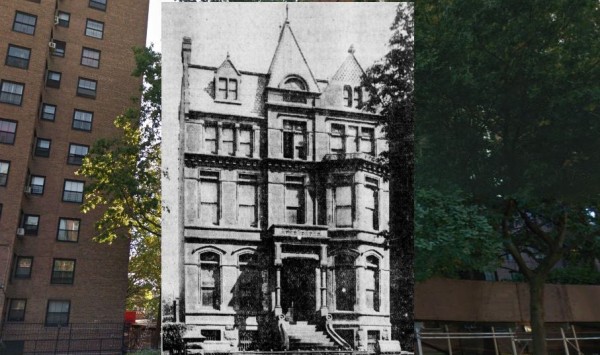
******************************************************************************************************************************** Brownstone Detectives investigates the history of our clients’ homes. The story you are about to read was composed from research conducted in the course of one of those investigations. Do you know the history of YOUR house? ******************************************************************************************************************************** Nothing says “time’s a-wastin’” like the gift of a good clock. And that “tick-tick-tick” on the old mantel back in the day was a constant reminder that there were only a certain number of hours, minutes, and seconds within each day. And, more than anyone else, James Arthur knew it. A CLOCK, A CLOCK, MY KINGDOM FOR A CLOCK! James Arthur, a wealthy industrialist and owner of a machine works in Brooklyn, collected all manner of timepieces. He also fixed them, traded them, dreamt about them, and talked about them all day long – literally. He lectured on clocks, giving hundreds of speeches on timepieces in his lifetime. And as a rich Brooklynite he had a lot of that time on his hands. He traveled. He sought out clocks. He talked some more about clocks through interpreters in foreign lands. Then, at some point, he realized that he needed a home for all of those clocks. And with the number of clocks he owned, it would need to be a big one. No. 357 CLINTON AVENUE – THE CLOCK HOUSE In 1914, Arthur found that place. It wasn’t a new building, and it likely needed some work, but it was grand, had great presence, and – most importantly – it was […]
THE HERO OF THE HALSEY STREET FIRE (1911)
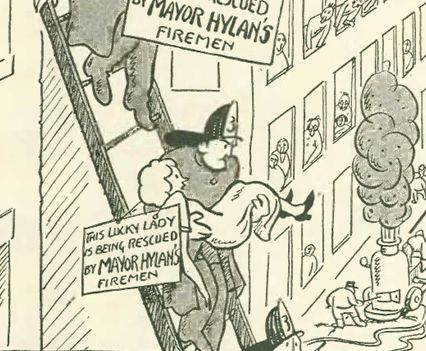
******************************************************************************************************************************** Brownstone Detectives investigates the history of our clients’ homes. The story you are about to read was composed from research conducted in the course of one of those investigations. Do you know the history of YOUR house? ******************************************************************************************************************************** Late in 1911, on a brisk early November morning, a fire broke out in the ground floor store of a 4-story corner apartment building across the street from Saratoga Square Park. It quickly spread, engulfing the entire building. Smoke pouring out of the store on the ground floor of 801 Halsey Street was first seen by a streetcar motorman, William Coffey, who, thinking quickly, began to clang his streetcar gong to arouse the sleeping inhabitants of the building. Coffey and his conductor, along with their six passengers, descended from the car and rushed to the building to do what they could do to assist in evacuating the residents. The fire had apparently started on the ground floor on the Halsey side of the building in a stationery store run by Wolf Bialik. Next door was a grocery store operated by Ernest Seemeyer. The flames then quickly “shot up the dumb waiter shaft to the roof, mushrooming out on each floor.” DETECTIVE O’HARA TO THE RESCUE Across the street, at No. 98 Howard Avenue, a 37-year-old police detective, Irving A. O’Hara, upon hearing the street car gong, had begun dressing quickly and rushed across the street to assist. By this point, the three families living in the building had made it out […]
DR. DOLITTLE OF BROOKLYN HEIGHTS (1910)
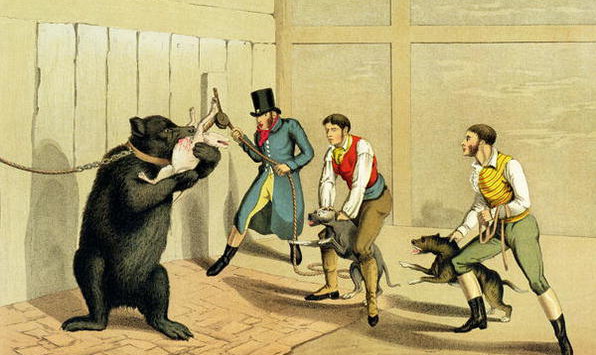
******************************************************************************************************************************** Brownstone Detectives investigates the history of our clients’ homes. The story you are about to read was composed from research conducted in the course of one of those investigations. Do you know the history of YOUR house? ******************************************************************************************************************************** All neighborhoods have their odd birds. In the early part of the 20th century, Brooklyn Heights had Harold S. Burnett. Burnett, known throughout Brooklyn as a keeper and handler of exotic animals, birds, and reptiles, was often in the newspapers, either because of his escapades with his animals, or because of the other one involving the divorce of his wife. And Burnett had quite the collection of animals – from boa constrictors, to lizards, to game cocks, to fighting dogs and bucking broncos. There didn’t seem to be an animal that Burnett would not consider handling. THE DAY THE BEAR APPEARED One day, Burnett confessed to a friend his desire to own a bear. So, when that friend returned from a hunting trip, he sent a bruin to Burnett as a gift. “He lives in Flatbush and bagged it on a hunting trip,” Burnett explained how he came by the animal. “But the bear was so large they had to take the doors off the hinges to get it in the back yard and it was such a fierce brute that I couldn’t let it get out of its cage.” “SO I DECIDED TO HAVE IT SHOT.” At some point after having the animal in his backyard for short period, Burnett […]
A COLLAPSE, A DEATH, & AN INQUIRY (1912)
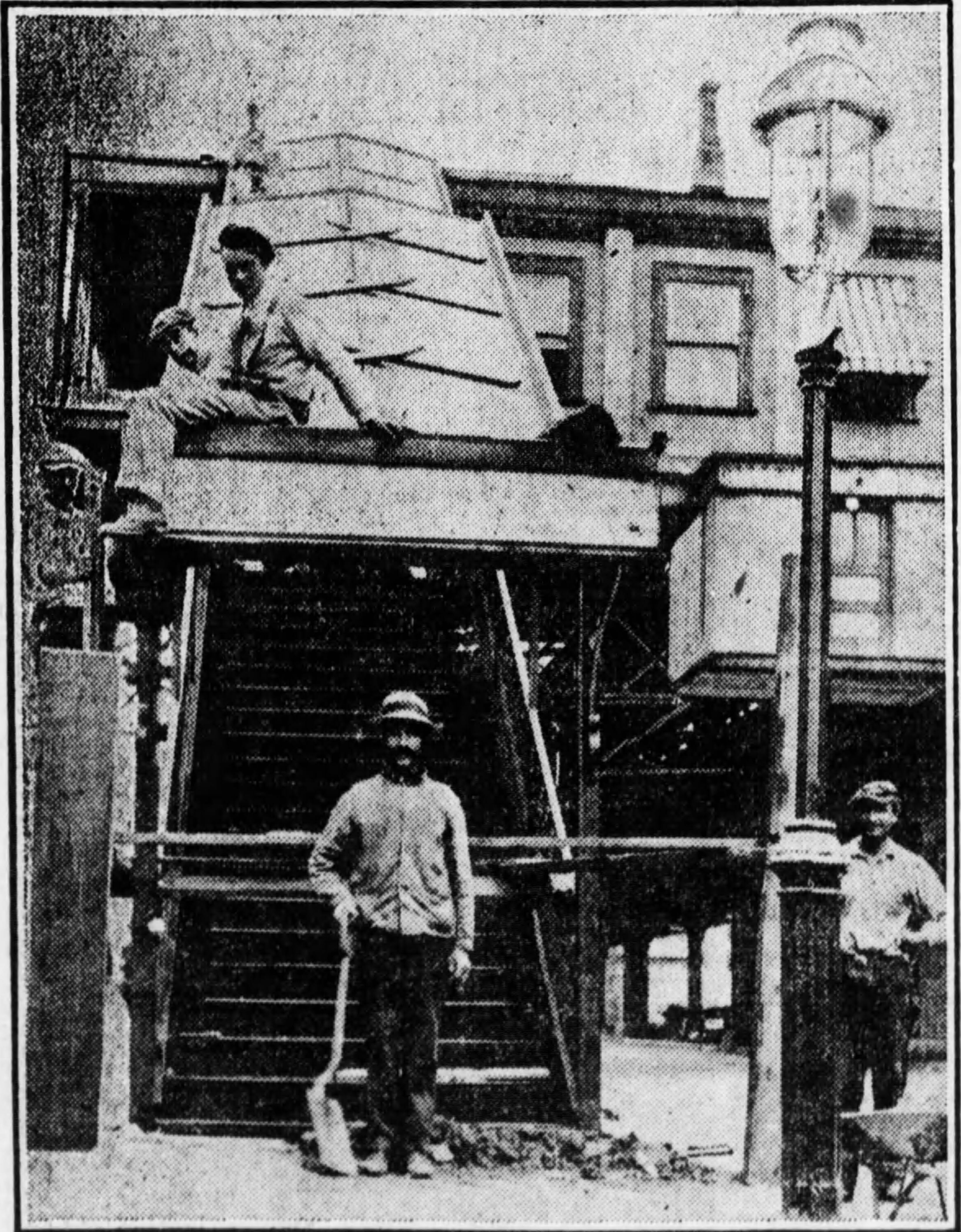
******************************************************************************************************************************** Brownstone Detectives investigates the history of our clients’ homes. The story you are about to read was composed from research conducted in the course of one of those investigations. Do you know the history of YOUR house? ******************************************************************************************************************************** It happened just before Christmas of 1912. A young husband in the prime of his life rushes to buy a last-minute Christmas gift for his beautiful wife. With the pearl necklace safely deposited in his suit-coat pocket, he dashes to catch the train that is approaching. Rushing up the stairwell to the Long Island Rail Road (L.I.R.R.) platform, he quickly reaches the top step. As he turns the corner to run for the platform, he barely senses the very stairwell beneath him shifting almost imperceptibly beneath his feet. Then, as a loud crack reports his entire balance has shifted, and he is suddenly in a terrifying free-fall. Seconds later the young husband’s body is covered with tons of – what had seconds before been – concrete stairs. This fatal collapse of the L.I.R.R. stairwell occurred at Atlantic and New York avenues, and was subsequently blamed on the corrosion of two cast-iron posts which supported the entire concrete structure. The tragedy on the L.I.R.R. stairway at New York and Atlantic avenues ended in the sudden death of a well-known art expert, David H. Cochran of 113 Macon Street. THE BEGINNING OF A “BIG” INQUIRY The very day afterward, as the finger-pointing already began to take place, a “big” inquiry was established which […]
“PLAIN” GIRLS SHOULD GO TO COLLEGE (1911)
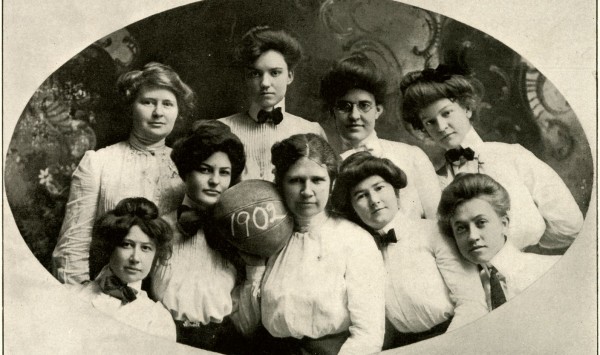
******************************************************************************************************************************** Brownstone Detectives investigates the history of our clients’ homes. The story you are about to read was composed from research conducted in the course of one of those investigations. Do you know the history of YOUR house? ******************************************************************************************************************************** It’s tough being plain. But if you go to college you increase your chances of getting that “MRS” degree. So said Brooklynite Imogene Kelly who, while in her senior year at Wellesley College in Massachusetts, was editor-in-chief of the school’s newspaper, Wellesley College News. The top scribe’s job gave the sensible young lady ample opportunity to place her thoughts before her adoring public. After her piece about the necessity of homely girls attending college to increase their chances of marital bliss, though, Kelly hadn’t much of an audience at all. WHY GIRLS GO TO COLLEGE In an article in the Brooklyn Daily Eagle, Kelly was showcased for her viewed of the necessity of a college education. “The unattractive girl, in order to equalize her chances for a husband with the less plain girl, must do so by getting an education,” Kelly reported. “The girl who is attractive and good looking need not secure a college training in order to fulfill her marriage destiny.” Kelly’s story, though, earned her an audience far beyond the campus of Wellesley, as it was picked up by a number of news services and printed in many places around the country. “The girls at Wellesley, as a rule, are not beautiful, and for that reason these girls […]